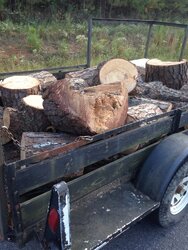Got a 10' trailer load of pine today. Bucked and loaded from a tree company that had just taken the tree down.
I did however have to listen to a speech about not burning pine in a wood stove.....I just nodded my head and thanked them.......
Sent from my iPhone using Tapatalk
I did however have to listen to a speech about not burning pine in a wood stove.....I just nodded my head and thanked them.......
Sent from my iPhone using Tapatalk
Last edited:


